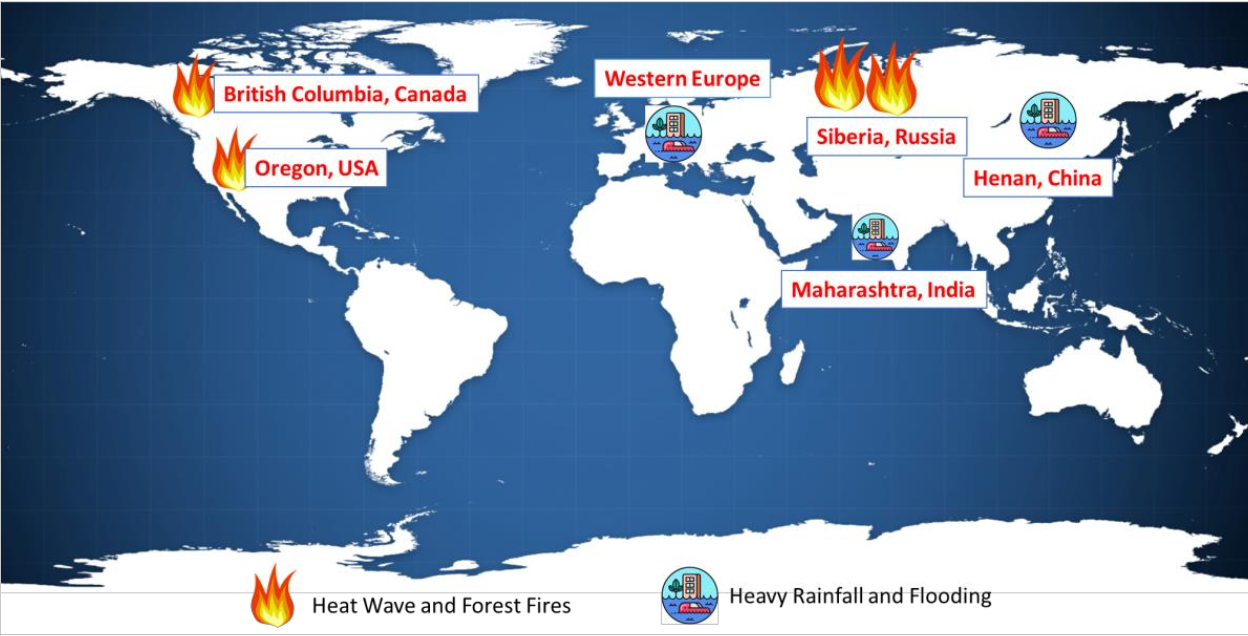By Aarya Krishnan
Mumbai, Jul 25: Several rain-related extreme weather occurrences have occurred in India over the last week. The state of Maharashtra is experiencing the heaviest rain in July in four decades. Hundreds of thousands of people have been adversely affected by downpours, and major rivers in that area are in danger of overflowing. Authorities evacuated over 90,000 people from flood- damaged areas. On 23rd July, Mahabaleshwar, a hill station in Maharashtra’s Satara district in the Western Ghats, received the most rainfall in its history (60cm in the 24 hours). Heavy rains have caused landslides in Raigad district displacing thousands of people. Mumbai also experienced rain and has been placed on orange alert (“heavy to very heavy rain at isolated locations”). Other portions of the western coast, including cities and towns in Madhya Pradesh, Karnataka, and Goa, have also seen unusually heavy rain and flooding in the past 24 hours.
India is not the only country experiencing severe weather. Extreme climatic events are occurring on five continents simultaneously. While China and Western Europe have both been devastated by disastrous floods in the last week, events such as wildfires are sweeping the western United States and Russia’s Siberia.
China: Heavy rains have impacted numerous countries, with China being one of the most severely affected. The central Chinese province of Henan is seeing its worst rainfall in 1,000 years.
It has resulted in a massive flood in Zhengzhou. From last Saturday to Tuesday, Zhengzhou received 617.1 mm of rain, which is nearly equal to the city’s annual normal (640.8 mm). According to state-run media, the flooding affected 1.24 million people, with up to 1,60,000 being evacuated. President Xi Jinping dispatched up to 5,700 People’s Liberation Army troops to the city, nearly 650 kilometres southwest of Beijing, for search and rescue operations.
Western Europe: At the same time, violent storms and continuing intense rainfall caused deadly flooding in Germany, Belgium, Austria, and sections of Italy. Heavy rains caused rivers and streams to swell and flood the towns and communities along the banks of Ahr River in Germany. When the soil and water bodies could no longer absorb the extra water, it spilled over, wreaking havoc on adjacent places and causing damage to buildings, public transportation, the environment, and people’s property. This was one of the worst large-scale flooding to hit the country in nearly six decades.
North America: In the midst of a heatwave that brought temperatures to record highs, Oregon in the United States and British Columbia in Canada are battling massive fires. The Oregon fire is so large that it can be seen from space. This is the largest wildfire in the United States this year, having scorched more than 340,000 acres. Canada is also fighting fires, with around 300 fires and evacuation orders affecting approximately 5,700 people.
Russia: Siberia, one of the world’s coldest locations, is currently experiencing a heat wave. Forest fires have destroyed 3.7 million acres of land in Russia’s north-east Siberia. The smoke has engulfed cities and villages, forcing the airport to close.
The United Kingdom and Ireland are also suffering heatwaves, with the United Kingdom’s meteorological department issuing its first-ever excessive heat warning. Individual weather phenomena are difficult to link to the climate catastrophe. Experts agree, however, that long-term climate changes induced by human activities are increasing the frequency and severity of such occurrences. (Representative Image: Location of extreme weather conditions shown on the map).


